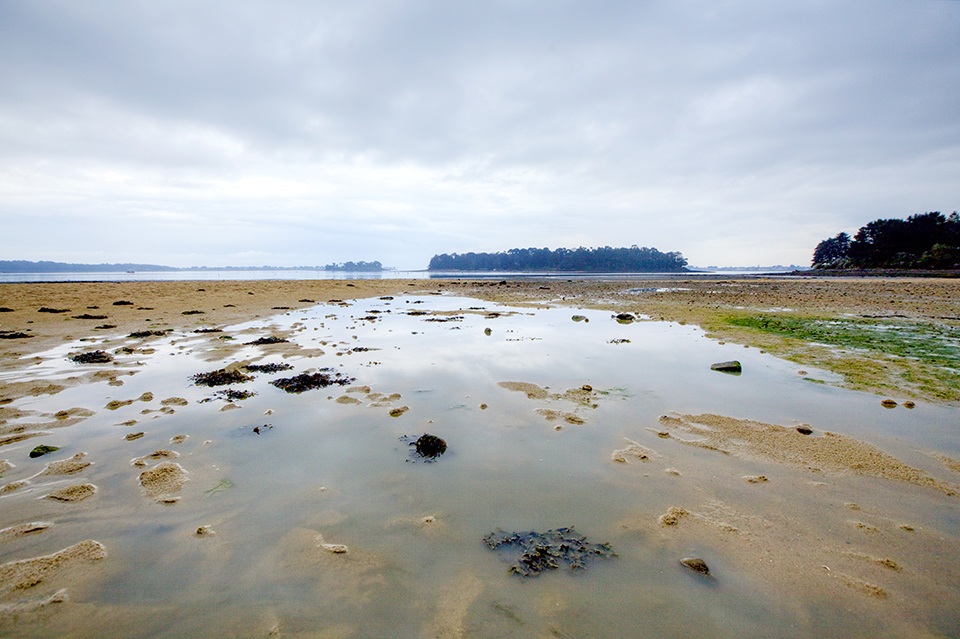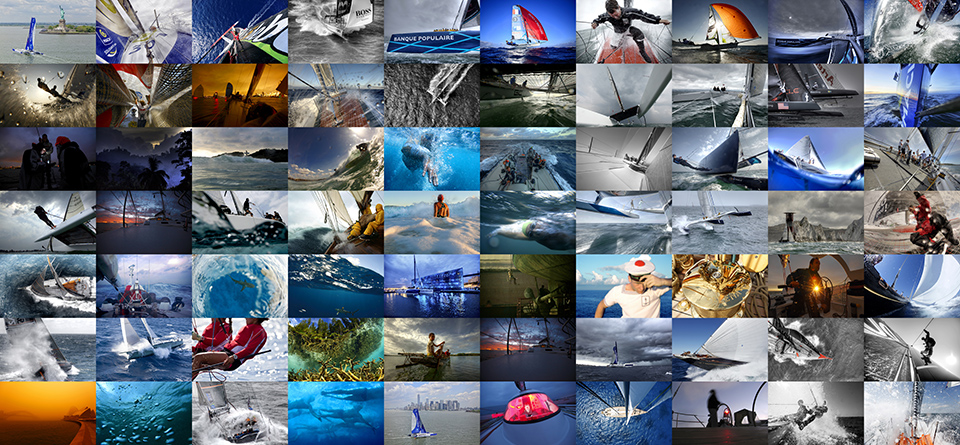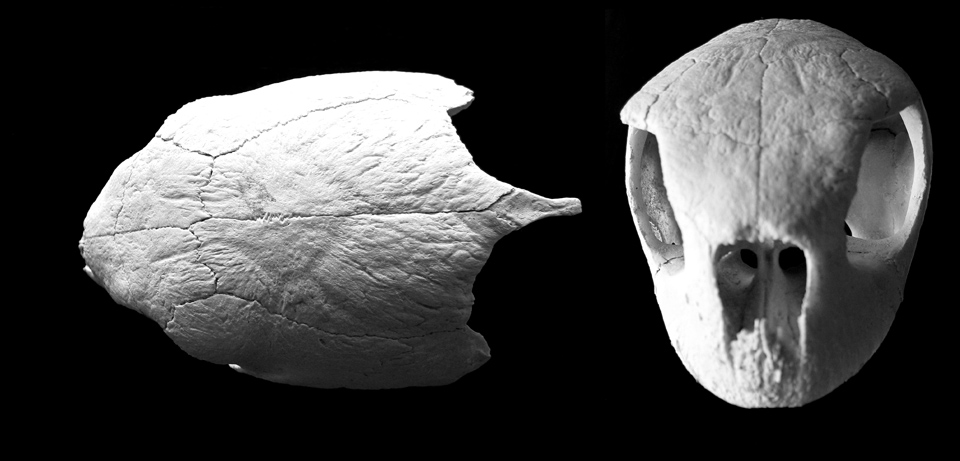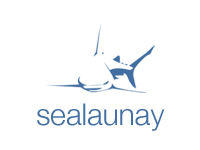 The regularity and beauty of the waves at Le Loch beach have made this a hot spot for surfers.
The regularity and beauty of the waves at Le Loch beach have made this a hot spot for surfers.
Category Wild Life
Mar 17
Winter Surf
Le Loch, Morbihan, Brittany, France 47º45’16″N 03º30'53″W
Apr 11
Earth Day
Global
 Earth Day, photographer Christophe Launay is suggesting something easy but imperative: “Don’t Be a Tosser.” (Readers in Commonwealth countries will find this an especially funny and easy-to-remember phrase. ) Basically, don’t be a wanker. Quit chucking your trash overboard.
Earth Day, photographer Christophe Launay is suggesting something easy but imperative: “Don’t Be a Tosser.” (Readers in Commonwealth countries will find this an especially funny and easy-to-remember phrase. ) Basically, don’t be a wanker. Quit chucking your trash overboard.
An artistically shocking collection of photographs from his recent travels in Australia, France and Morocco document persistent water pollution. The captions contain some ugly facts, opinion and also some radical new concepts in the future of ‘Green’.
1. Don’t just stand there, collect the seaweed. Generations of coastal farmers have used fresh and dried seaweed for compost acceleration, as fertilizer and for pest control. Also, since most algae is fast growing, the Austrian firm Eoos last year introduced at a Tokyo designer’s week their proposal for a house that produces its own energy with a rooftop tank full of algae.
Read more at: http://www.houseofsalesinc.com/organa/fine_gardening_magazine.htm
http://www.eoos.com/cms/index.php?id=201
2. We know what not to do. “An old semi-retired designer, sermonizing on the social responsibility of the design profession, is sort of like a reformed prostitute testifying at a church revival meeting,” wrote Budd Steinhilber in the summer 1990 issue of Innovation, the Industrial Designers Society of America. That issue was entitled The Environment: The Forgotten Client.
Some people are designing with the waste stream in mind, but the focus has become the 1% of recovered plastics…what about all the rest that blows overboard, that’s tossed overboard or incorrectly separated for recycling?
Within the U.S. soft drink industry the amount of plastic containers has gone from zero in the mid 1970s to 10 billion in 1999. Never mind that some of these blow-molded bottles are recyclable, in a bin or landfill, they are not biodegradable in the sea. It’s fairly well established that at best recycling is band-aid, at worst, well, it’s worse.
So, dispose of your onboard plastics, metals, and cleaning products appropriately…and let’s seek alternatives. Some sustainable products at: http://www.podsnpeels.com/store/
3. Dead fish floating. The U.S. Forest Service first introduced “Give a hoot, Don’t pollute” over 35 years ago…this has now morphed into “Lend a Hand – Care for the Land.” How are we looking on the water? Next time you’re cleaning your boat consider natural cleaning solutions where possible, and watch what you dump overboard.
Will high gas prices drive us to find more radical environmental solutions?
Like… working the desert into electricity-generating land with concentrated solar power and sea-water desalination. The Future of Green section in the May 2011 issue of Azure Magazine, highlights that the first portable desalination unit in a 20cm chip is heading to market within a year.
So it’s not all doom and gloom, let’s get excited about the energy revolution. Reassess societal values: disposability, innovations that fight climate change, or work with it, ought to be imperative. We can create clean fuels, and no, wind turbines are not the panacea, we know this! Business owners, designers, consumers…choose, demand and create the biodegradable/compostable solutions.
http://www.azuremagazine.com/
4. Seriously, plastic bottles and bags overboard? Come on.
We’re wondering, (is anybody else?), that perhaps oil is under our feet for a reason. Rather than for our cars and factories, the petrol is here for stabilizing the earth. The more oil that is extracted from under the earth’s surface the more destabilization will induce enormous earthquakes. Could the oil underground be a necessary a shock absorber? Without that fluid protection between the core and the coating the more friction there is below. As we’ve seen in New Jersey, at Chernobyl, and now in Japan, nuclear doesn’t seem so safe after all, let’s keep looking.
Can we better control the appetite of our demand for oil? Is it enough to aim for more efficient transfer stations, consumer recycling efforts, or like Bjarke Ingels and his proposed artificial ski slope/waste-to-energy plant? http://www.arcspace.com/architects/big/wastetoeneryplant/wastetoenergyplant.html
For now, using the plastics for beverages, and for cleaning and storage is unavoidable. However, check your labels or make a home brew from natural products. Here is a list of safer on-the-water applications: http://www.boatsafe.com/nauticalknowhow/vessel_cleaning.htm
Let’s aim for exciting new urban strategies to materials and waste, and on our own terms encourage multi-sectoral cooperation. For example, plant biologists are working with architects and engineers: synthetic biology studies how to build artificial biological systems for engineering applications, using many of the same tools and experimental techniques resulting in carbon-sequestering concrete and self-healing silicone. Maybe our plastics have an after-life we haven’t yet thought of? As sailors, who can we work with to clean up our waters?
Words: Trixie B. Wadson

Mar 11
Still Life: Green Turtle Skull
Lacepede Island, Western Australia, Australia 16º51’85″S 122º10’50″E
Jun 09
Galapagos Shark
Middleton Reef, Tasman Sea, Australia 29º25’24″S 159º03’35″E
 The Galapagos shark (Carcharhinus galapagensis) is a species of requiem shark, family Carcharhinidae, found worldwide. This species favors clear reef environments around oceanic islands, where it is often the most abundant shark species. A large species that grows to 3.7 m (12 ft), the Galapagos reef shark has a typical fusiform “reef shark” shape and is very difficult to distinguish from the dusky shark (C. obscurus) and the grey reef shark (C. amblyrhynchos). An identifying character of this species is its tall first dorsal fin, which has a slightly rounded tip and originates over the rear tips of the pectoral fins.
The Galapagos shark (Carcharhinus galapagensis) is a species of requiem shark, family Carcharhinidae, found worldwide. This species favors clear reef environments around oceanic islands, where it is often the most abundant shark species. A large species that grows to 3.7 m (12 ft), the Galapagos reef shark has a typical fusiform “reef shark” shape and is very difficult to distinguish from the dusky shark (C. obscurus) and the grey reef shark (C. amblyrhynchos). An identifying character of this species is its tall first dorsal fin, which has a slightly rounded tip and originates over the rear tips of the pectoral fins.
Galapagos sharks are active predators often encountered in large groups. They feed mainly on bottom-dwelling bony fishes and cephalopods; larger individuals have a much more varied diet, consuming other sharks, marine iguanas, sea lions, and even garbage. As in other requiem sharks, reproduction is viviparous, with females bearing litters of 4–16 pups every 2–3 years. The juveniles tend to remain in shallow water to avoid predation by the adults. Galapagos sharks are bold and have behaved aggressively towards humans, and are thus regarded as dangerous. The International Union for Conservation of Nature (IUCN) has assessed this species as Near Threatened, as it has a slow reproductive rate and there is heavy fishing pressure across its range.
Jun 09
Middleton Reef
Tasman Sea, Australia 29º26’52″S 159º05’01″E
 Shipwrecks aground on Middleton Reef.
Shipwrecks aground on Middleton Reef.
Middleton Reef is a coral reef in the Tasman Sea. It is separated by a deep oceanic pass some 45 km wide from nearby Elizabeth Reef, forming part of the Lord Howe Rise underwater plateau. Middleton Reef is around 220 km from Lord Howe Island and 555 km from the coast of New South Wales. In 1997 the Environment, Sport and Territories Legislation Amendment Bill 1996 included Middelton Reef in Australia’s Coral Sea Islands Territory.This island is included also in Elizabeth and Middleton Reefs
Middleton Reef is a platform reef and is among the southernmost platform reefs in the world. However, despite its relatively high latitude, a wide variety of flora and fauna exists both on the island and in the surrounding waters. This is due to its location where tropical and temperate ocean currents converge.
Middleton reef is about 8.9 km long by 6.3 km wide and is usually submerged. However, at low tide most of the reef flat is exposed. At high tide only one cay on the reef is visible, at one metre above sea level. The cay is called The Sound and is 100 m by 70 m.
The reefs form the Elizabeth and Middleton Reefs Marine National Park Reserve managed by the Government of Australia under the Natural Heritage Trust.
Surveys by the Australian Institute of Marine Science have highlighted healthy number of Black Cod Epinephelus daemelii which is now a threatened species in NSW waters. The survey in 2003 highlighted some 111 species of coral and at the same time identified 181 species of fish. The total number of recorded fish species on the reef is 311 across several surveys. High numbers of Galapagos sharks Carcharhinus galapagensis were observed at Elizabeth Reef.
Sep 00









